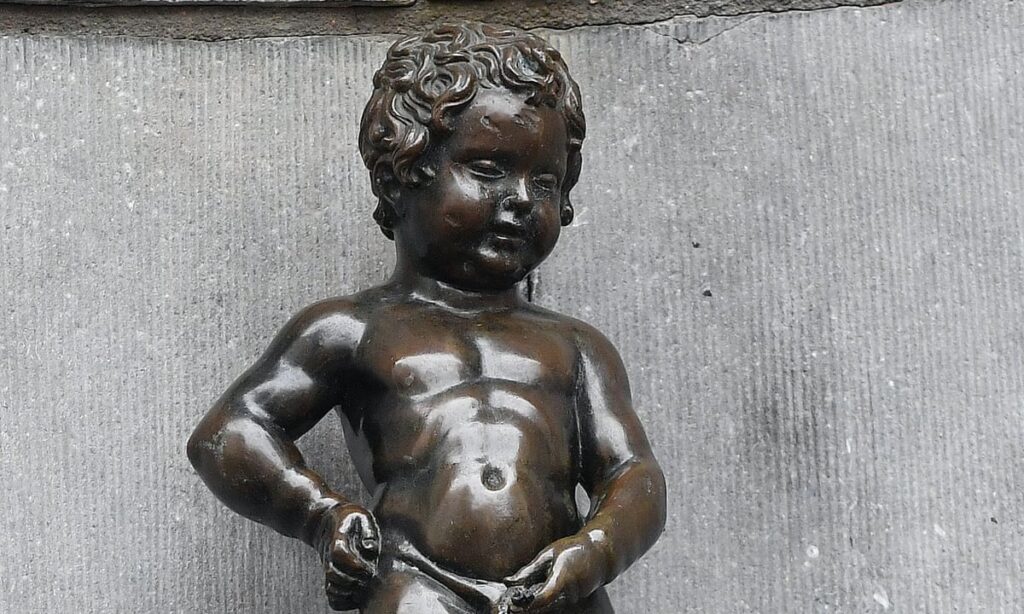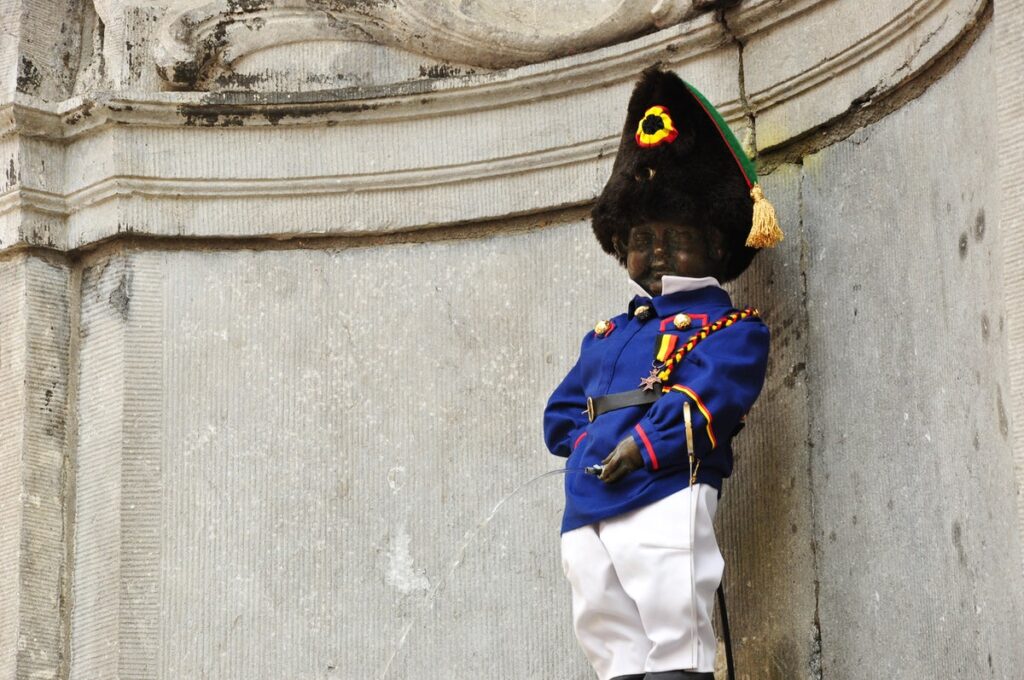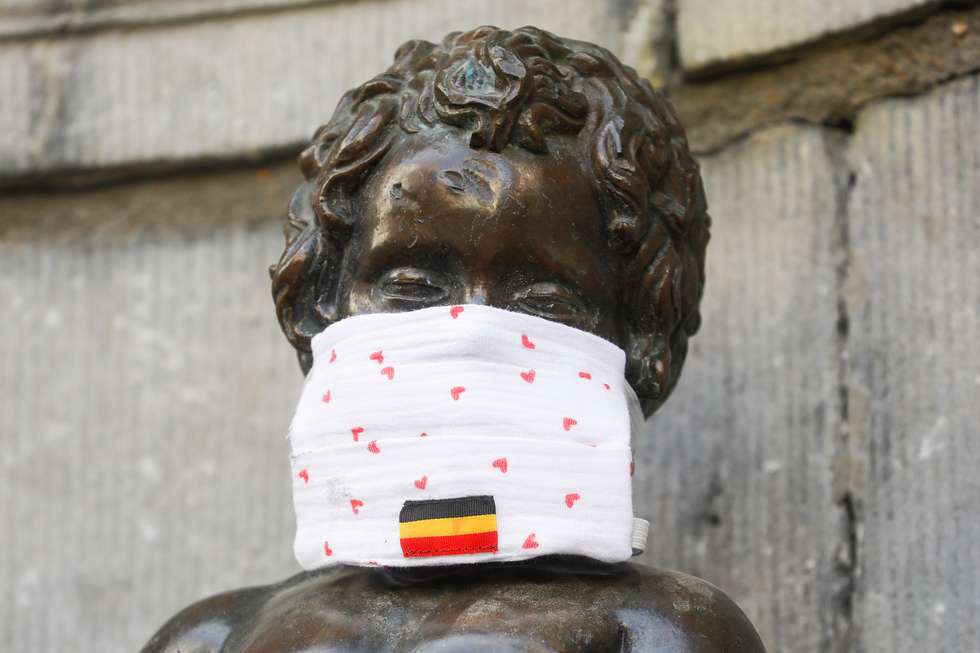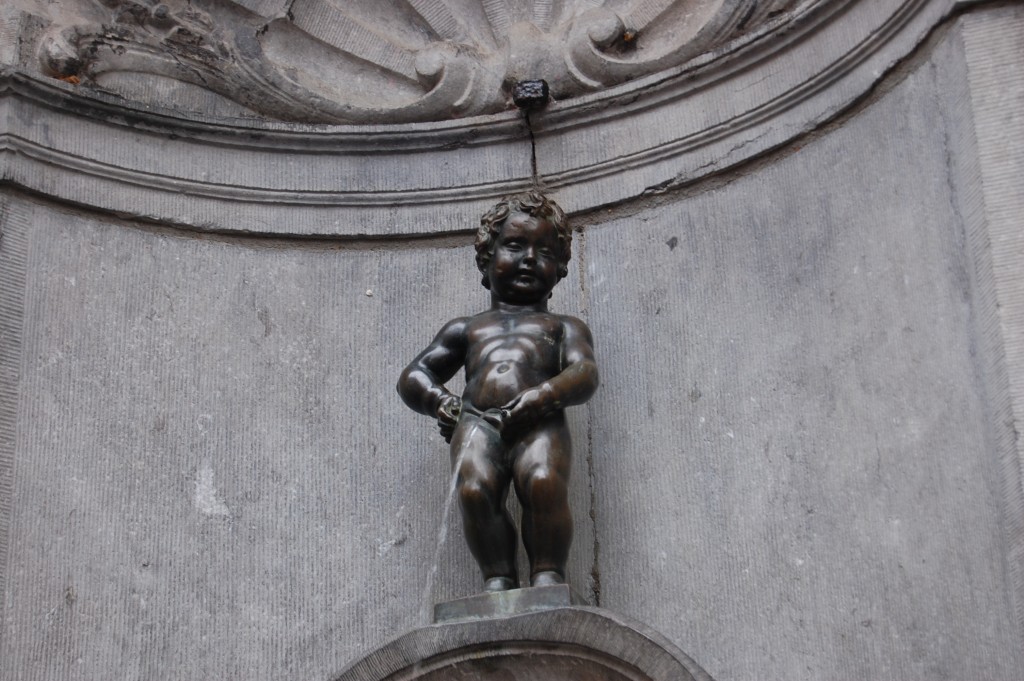Manneken Pis, Dutch for ‘”Little Pissing Man”‘) is a landmark 61 cm (24 in) bronze fountain sculpture in central Brussels (Belgium), depicting a naked little boy urinating into the fountain’s basin. It was designed by Jérôme Duquesnoy the Elder (1570–1641), and put in place in 1618 or 1619. The current statue is a replica which dates from 1965. The original is kept in the Brussels City Museum.
Manneken Pis is the best-known symbol of the people of Brussels. It also embodies their sense of humour (called zwanze in Brussels’ dialect) and their independence of mind.
Legends
There are several legends behind Manneken Pis, but the most famous is the one about Duke Godfrey III of Leuven. In 1142, the troops of this two-year-old lord were battling against the troops of the Berthouts, the lords of Grimbergen, in Ransbeke (now Neder-Over-Heembeek). The troops put the infant lord in a basket and hung the basket in a tree to encourage them. From there, the boy urinated on the troops of the Berthouts, who eventually lost the battle.
- Another legend states that, in the 14th century, Brussels was under siege by a foreign power. The city had held its ground for some time, so the attackers conceived of a plan to place explosive charges at the city walls. A little boy named Julianske happened to be spying on them, as they were preparing. He urinated on the burning fuse and thus saved the city. There was, at the time (middle of the 15th century, perhaps as early as 1388), a similar statue made of stone. The statue was stolen several times.
- Another story, often told to tourists, tells of a wealthy merchant who, during a visit to the city with his family, had his beloved young son go missing. The merchant hastily formed a search party, which scoured all corners of the city, until the boy was found happily urinating in a small garden. The merchant, as a gift of gratitude to the locals who helped out during the search, had the fountain built.
- Another legend tells that a small boy went missing from his mother, when shopping in the centre of the city. The woman, panic-stricken by the loss of her child, called upon everyone she came across, including the mayor of the city. A citywide search began, and when at last the child was found, he was urinating on the corner of a small street. The story was passed down over time and the statue was erected as a tribute to the well-known legend.
- Another legend tells of the young boy who was awoken by a fire and was able to put out the fire with his urine. In the end, this helped stop the king’s castle from burning down.






